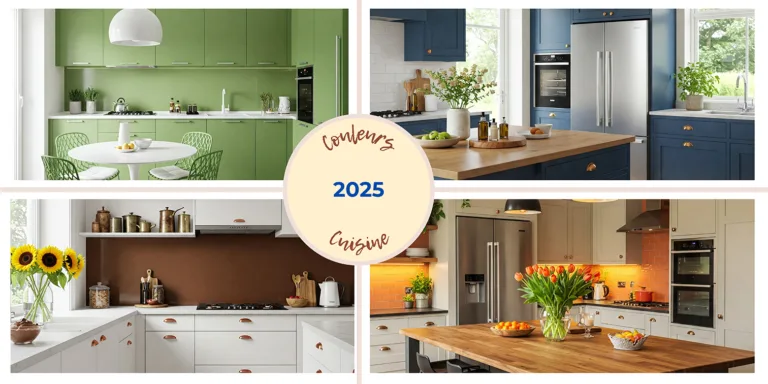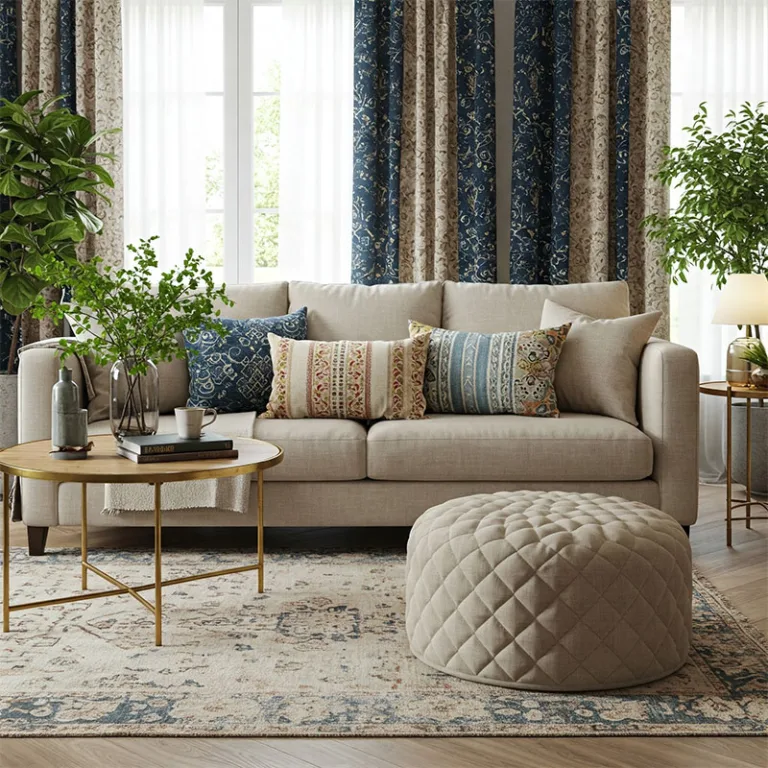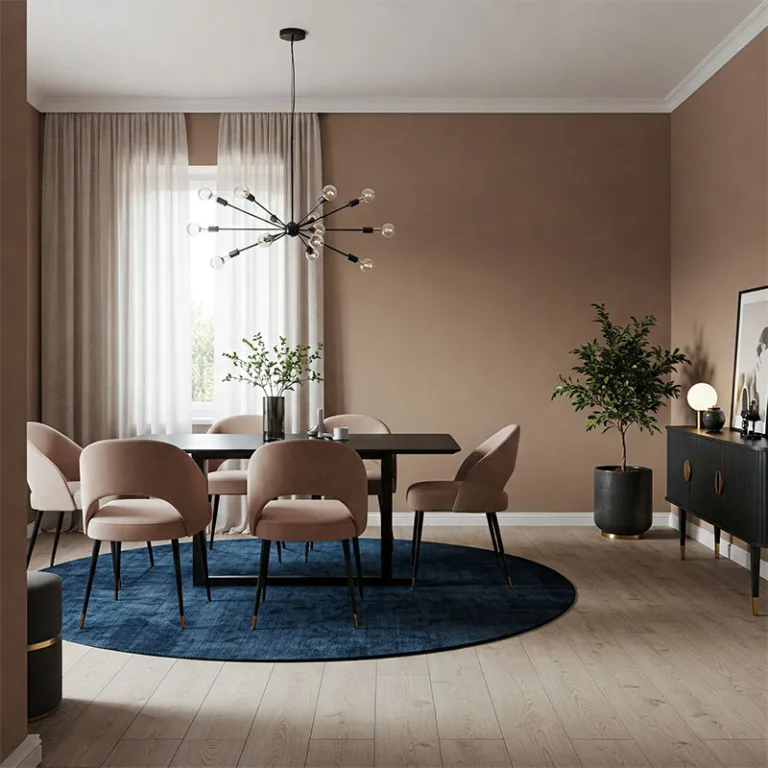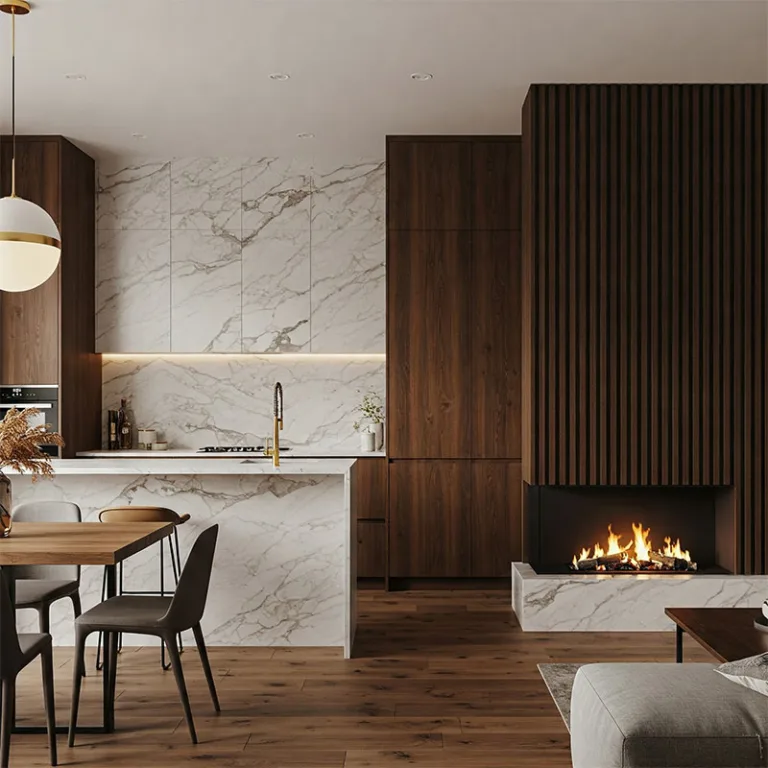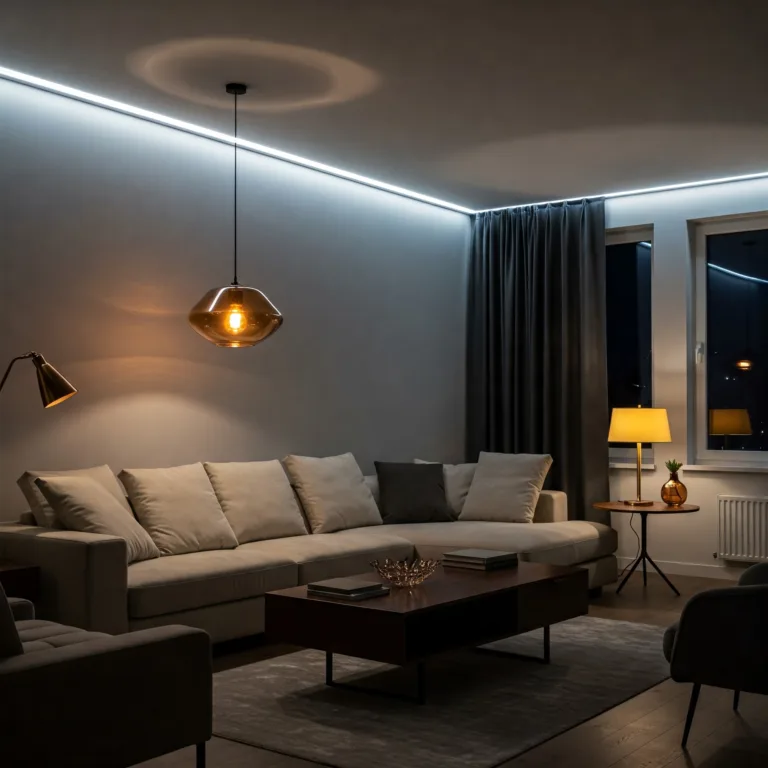The Influence of Japandi Style in the USA: How to Adopt It?
In recent years, the Japandi style has truly captured the hearts of design lovers all over the United States. This beautiful blend of Japanese minimalism and Scandinavian practicality has transformed modern interiors, creating a calm and functional vibe that really speaks to anyone looking for simplicity and warmth in their homes. So, what is Japandi style all about, and how can you bring it into your own living space? Let’s dive into the core of Japandi design, why it’s so popular right now, and some handy tips for embracing this trend in your home.
Table of Contents
What is the Concept of Japandi Style?
Japandi is a unique design style that beautifully merges the simplicity of Japanese minimalism with the cozy charm of Scandinavian “hygge.” At its core, this aesthetic is all about simplicity, functionality, and craftsmanship. It emphasizes clean, uncluttered spaces, the use of natural materials, and a soothing neutral color scheme. The Japanese influence adds a touch of appreciation for imperfection and the beauty found in nature, while the Scandinavian element brings warmth and practicality to the mix. The end result is a home that feels both peaceful and welcoming, striking a perfect balance between form and function.
But Japandi is not just a passing trend; it’s a way of life that promotes intentional living, sustainability, and mindfulness. It inspires homeowners to prioritize quality over quantity, encouraging them to invest in durable, meaningful pieces instead of overwhelming their spaces with unnecessary decor.
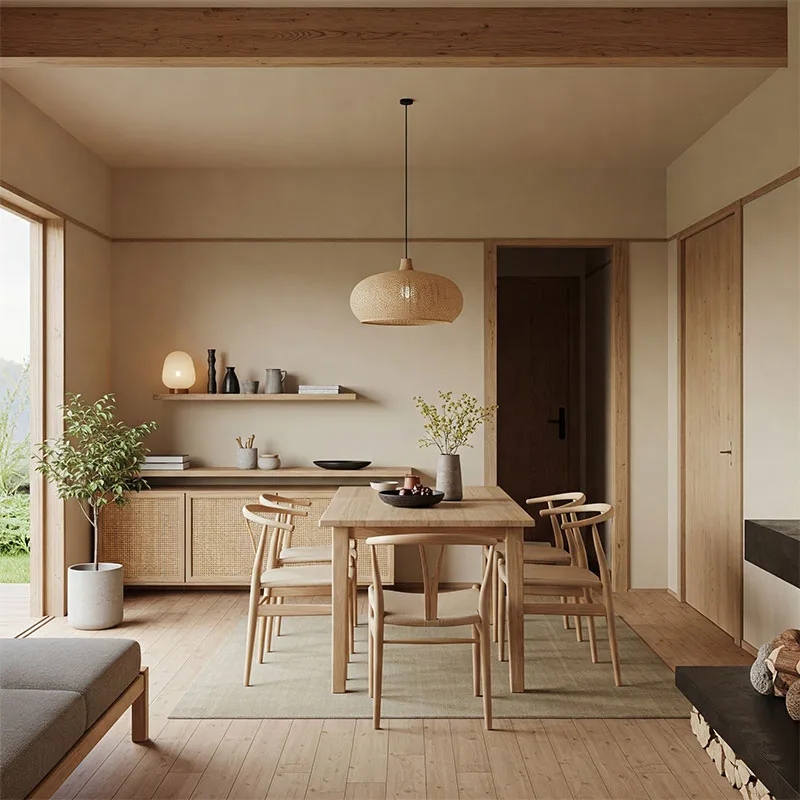
Is Japandi Still Trendy?
While some design trends come and go, Japandi has managed to hold its ground as a significant and relevant style in the United States. Its lasting charm comes from its flexibility and its connection to modern values like sustainability, minimalism, and well-being.
Many homeowners are attracted to Japandi because it provides a soothing escape from the hustle and bustle of everyday life. The pandemic has had a big impact on what people want in their interiors, with a growing emphasis on comfort, peace, and practicality. Japandi’s knack for crafting a balanced and restorative living environment has kept it at the top of the list for contemporary design trends.
Moreover, Japandi’s eco-friendly philosophy, emphasizing sustainable materials, artisanal furniture, and mindful consumption, strikes a chord with the increasing desire for green interiors. As interest in biophilic design and wellness-oriented spaces grows, Japandi continues to be a relevant and timeless option.
What Are the Rules for Japandi Design?
To successfully implement Japandi style in your home, it’s essential to follow key design principles that define this aesthetic.
Recommended Colors and Materials
Japandi interiors are characterized by a muted and earthy color palette that evokes serenity and warmth. The most commonly used shades include:
- Use soft colors like beige, white, and gray.
- Warm earth tones, like terracotta, ochre, and muted greens.
- Use deep, rich colors like navy blue, charcoal, and dark brown for contrast.
These colors create a balanced and peaceful atmosphere, enhancing natural light and openness in a space.
When it comes to materials, Japandi embraces:
- Natural wood: light Scandinavian oak and darker Japanese woods like walnut or teak.
- Stone and ceramic materials are used for their texture and durability.
- Linen and cotton fabrics for softness and coziness
- Handcrafted elements, emphasizing artistry and uniqueness
Minimalist furniture with clean lines and organic forms is a key component of Japandi style. Instead of overly ornate designs, opt for simple yet high-quality pieces that emphasize function without sacrificing beauty.
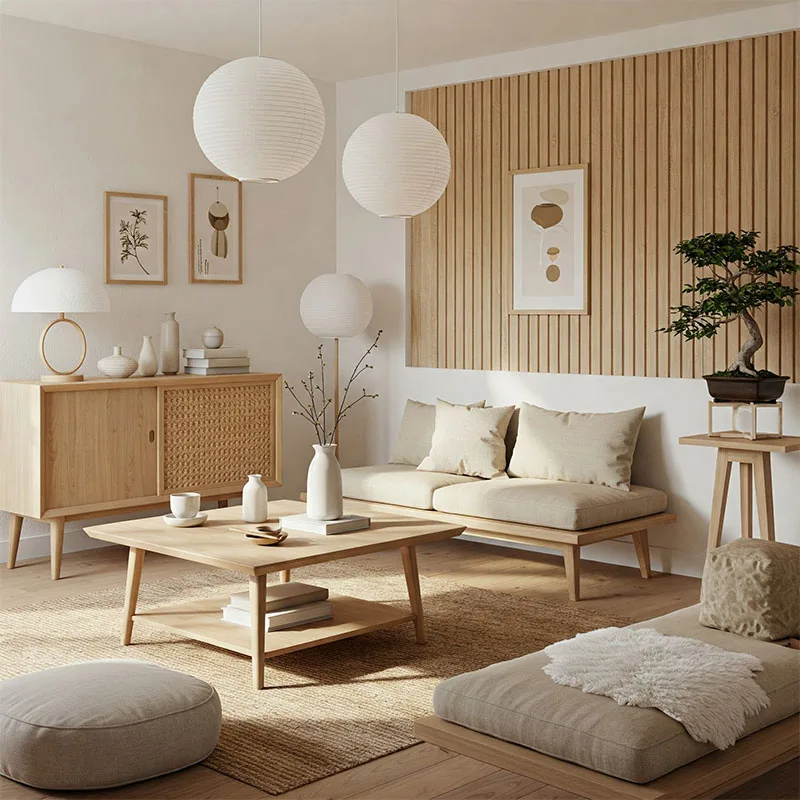
Japandi and Other Styles
A Fusion of Japanese Minimalism and Scandinavian Design
The essence of Japandi comes from its unique blend of two different yet harmonious design philosophies. Japanese minimalism draws inspiration from Zen principles, highlighting the importance of negative space, natural light, and the charm of imperfection, known as wabi-sabi. In contrast, Scandinavian design emphasizes warmth, comfort, and practical beauty. When combined, these styles produce an aesthetic that feels both elegant and inviting, striking a balance between modernity and timelessness.
Practical example
Imagine walking into a peaceful living room where the sleek elegance of Japanese minimalism beautifully blends with the inviting warmth of Scandinavian design. The atmosphere is effortlessly balanced, featuring a soothing palette of soft beige, warm gray, and gentle earth tones that create a calming vibe. A stylish, low-profile wooden sofa, with its light oak frame reflecting Scandinavian simplicity, pairs perfectly with a handcrafted Japanese walnut coffee table, both showcasing clean lines and functional beauty.
The open layout enhances the sense of tranquility, free from clutter, allowing natural light to pour in without interruption. Subtle textures add warmth without overwhelming the space: a linen throw casually draped over the sofa, a handwoven wool rug grounding the area, and a delicate rice-paper pendant lamp casting a gentle glow.
Thoughtfully selected accents bring depth, maybe a handcrafted wabi-sabi ceramic vase resting on a minimalist shelf or a single bonsai tree quietly nodding to nature. The interplay of light and dark materials, blonde wood contrasting with charcoal-hued furniture legs, creates a dynamic yet understated elegance. This is Japandi: where the cozy charm of Scandinavian design meets the serene essence of Japanese Zen, crafting a home that feels both peaceful and inviting.

What is the Difference Between Japandi and Wabi Sabi?
While Japandi and Wabi Sabi share similarities, they are distinct concepts.
- Japandi is a blend of Japanese and Scandinavian aesthetics, emphasizing functionality, simplicity, and high-quality craftsmanship.
- Wabi Sabi is a Japanese philosophy that finds beauty in imperfection, impermanence, and the natural cycle of growth and decay.
Here’s a comparative table to clearly differentiate Japandi and Wabi-Sabi styles:
| Feature | Japandi | Wabi-Sabi |
|---|---|---|
| Origins & Philosophy | Fusion of Japanese minimalism & Scandinavian functionality. Focus on simplicity, balance, and function. | Rooted in Japanese philosophy, embracing imperfection, impermanence, and natural beauty. |
| Minimalism Approach | Structured and intentional, with a balance between minimalism and coziness. | Organic and imperfect, allowing natural disorder and asymmetry. |
| Atmosphere & Mood | Elegant, modern, cozy, and harmonious. | Tranquil, poetic, deeply connected to nature and time. |
| Color Palette | Neutral tones (beige, gray, white, black), with some contrast. | Earthy, muted tones (beige, brown, gray, soft greens). |
| Materials | Natural materials like wood, stone, linen, with clean, refined finishes. | Raw, weathered materials like reclaimed wood, aged stone, rusted metal. |
| Textures | A mix of smooth and rough textures for a refined yet natural feel. | Emphasis on raw, aged, and imperfect textures. |
| Furniture Style | Minimalist and functional, inspired by Japanese and Scandinavian craftsmanship. | Rustic and handmade, often asymmetrical and aged. |
| Décor Elements | Soft textiles, minimalist ceramics, paper lanterns, Scandinavian-style chairs. | Handcrafted pottery, cracked ceramics (Kintsugi), linen cushions, aged metal fixtures. |
| Key Philosophy | Beauty in simplicity and function. | Beauty in imperfection and impermanence. |
Both styles emphasize simplicity, nature, and authenticity, but Japandi is more structured and functional, while Wabi-Sabi is more raw and poetic.
In essence, Wabi Sabi celebrates rustic and aged elements, while Japandi maintains a more structured and refined balance between simplicity and comfort. Japandi often incorporates more Scandinavian warmth, whereas Wabi Sabi leans toward an organic, asymmetrical aesthetic.
Inspiration for Every Room in the House
Living Room
Create a Japandi-inspired living room by using low-profile furniture, neutral tones, and natural materials. A solid wood coffee table, a linen-upholstered sofa, and handcrafted ceramic decor can establish a tranquil and inviting space. Keep the decor minimal, using carefully selected pieces that enhance the room’s functionality without overcrowding it.
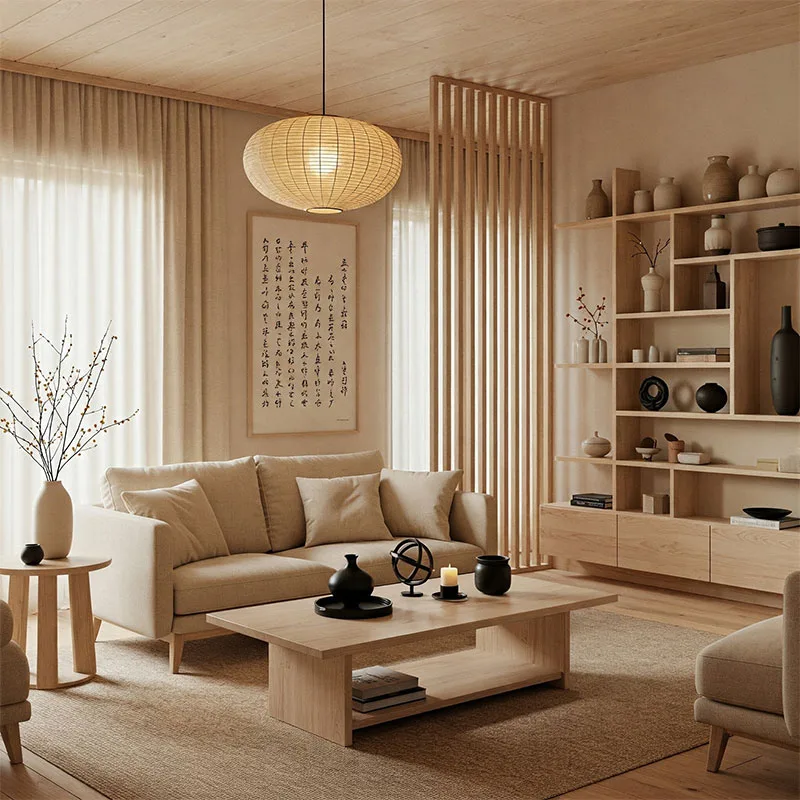
Kitchen
A Japandi kitchen emphasizes simplicity and efficiency. Opt for sleek cabinetry in natural wood tones, open shelving for an airy feel, and stone countertops for a tactile contrast. Incorporate ceramic dishware and handmade pottery for authenticity, and keep the countertops clutter-free to maintain a sense of calm.
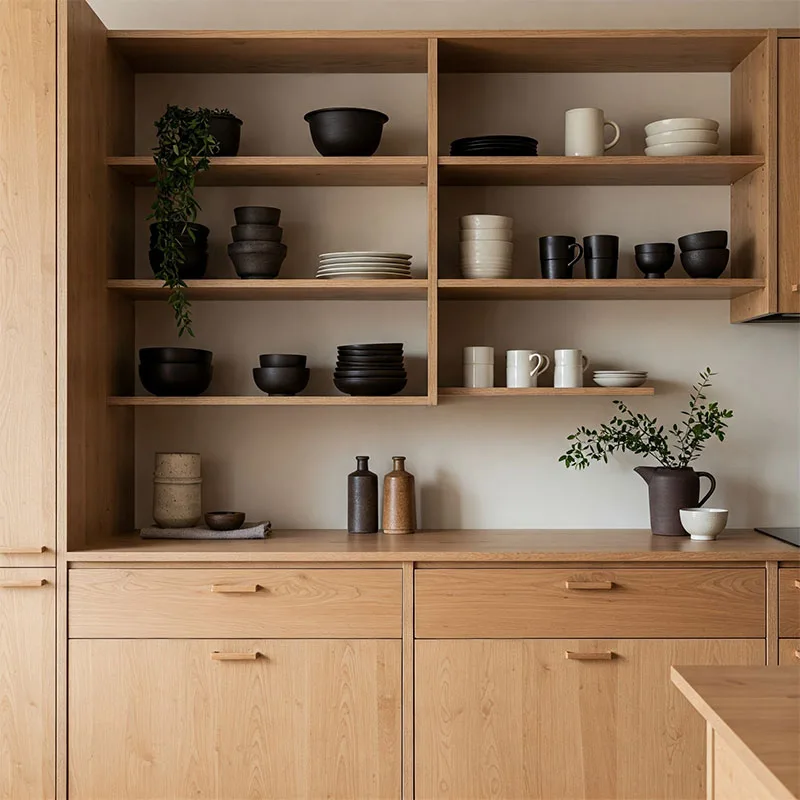
Bedroom
A Japandi bedroom should feel like a sanctuary. Choose a platform bed with a wooden frame, soft linen bedding, and minimal decor. Incorporate soft, ambient lighting to create a relaxing atmosphere. Keep the space open and uncluttered, allowing room to breathe and unwind.
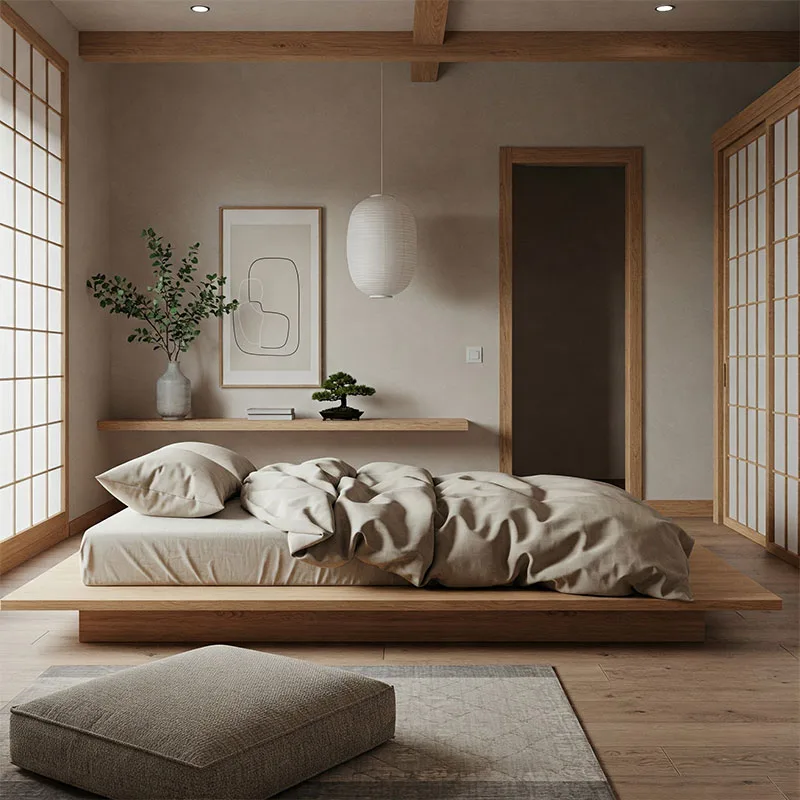
Bathroom
For a spa-like Japandi bathroom, focus on organic materials like stone, wood, and ceramic. A freestanding soaking tub, bamboo accessories, and neutral-hued towels will enhance the feeling of a serene retreat. Utilize soft lighting and minimalist decor to create a Zen-inspired space.
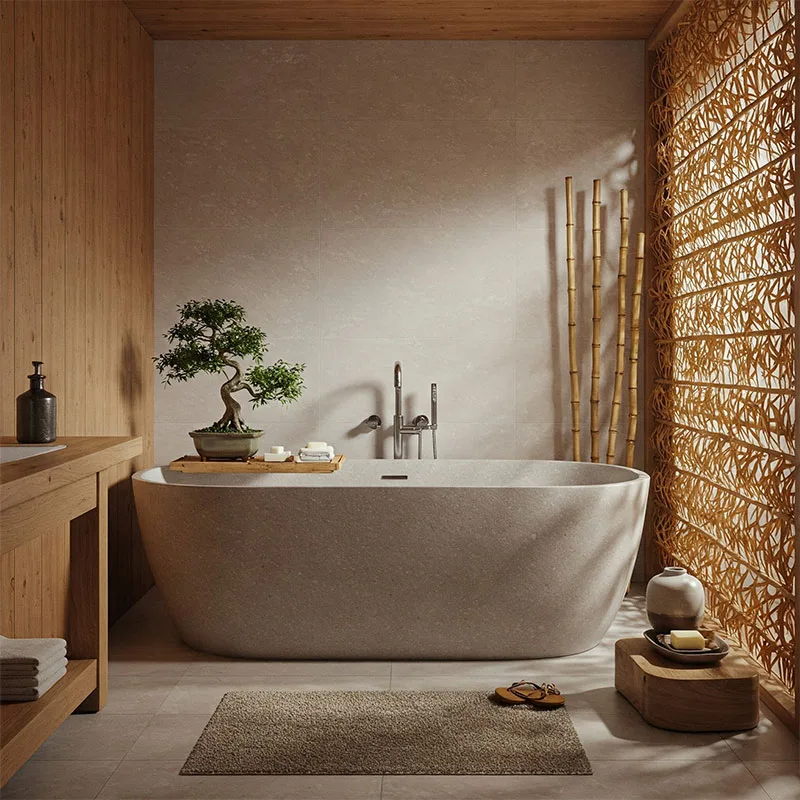
Home Office
A Japandi home office should be both functional and calming. Opt for a simple wooden desk, a comfortable yet stylish chair, and built-in storage to keep clutter at bay. Incorporate natural elements like plants or a stone desk organizer to maintain a connection with nature.
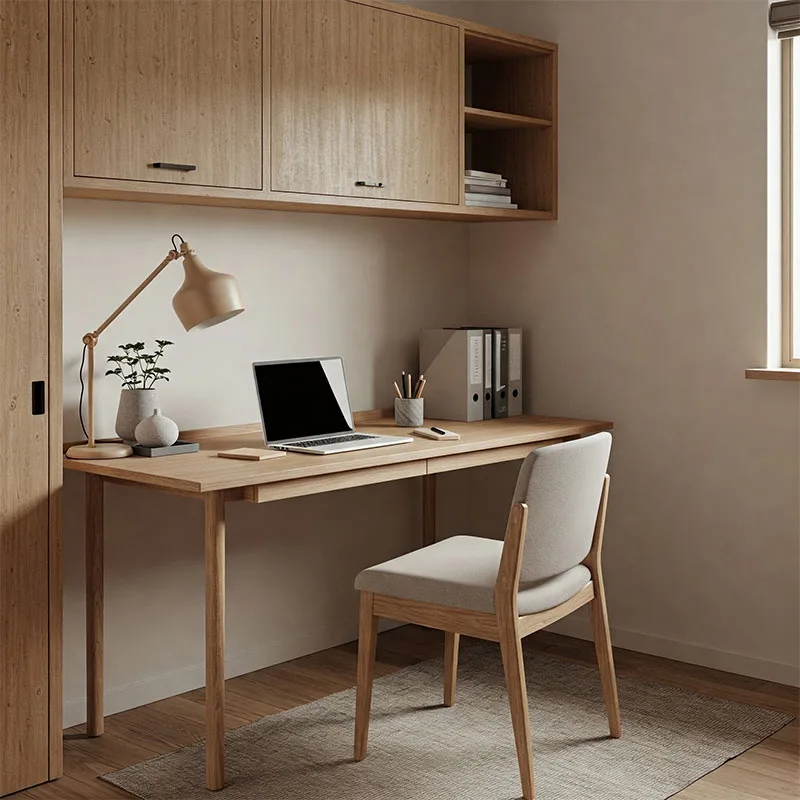
Final Thoughts
Japandi style goes beyond being just a design trend; it embodies a thoughtful and harmonious lifestyle. By merging the sleek minimalism of Japanese design with the cozy warmth of Scandinavian aesthetics, Japandi crafts spaces that are not only beautiful but also incredibly comforting and functional. Whether you’re overhauling your entire home or just adding a few Japandi-inspired touches, this style provides a timeless and flexible approach to interior design. With a focus on quality, sustainability, and intentional living, Japandi is reshaping how we create and enjoy our living spaces across the United States.
Make sure you’re following us on social media so you don’t miss any news.


